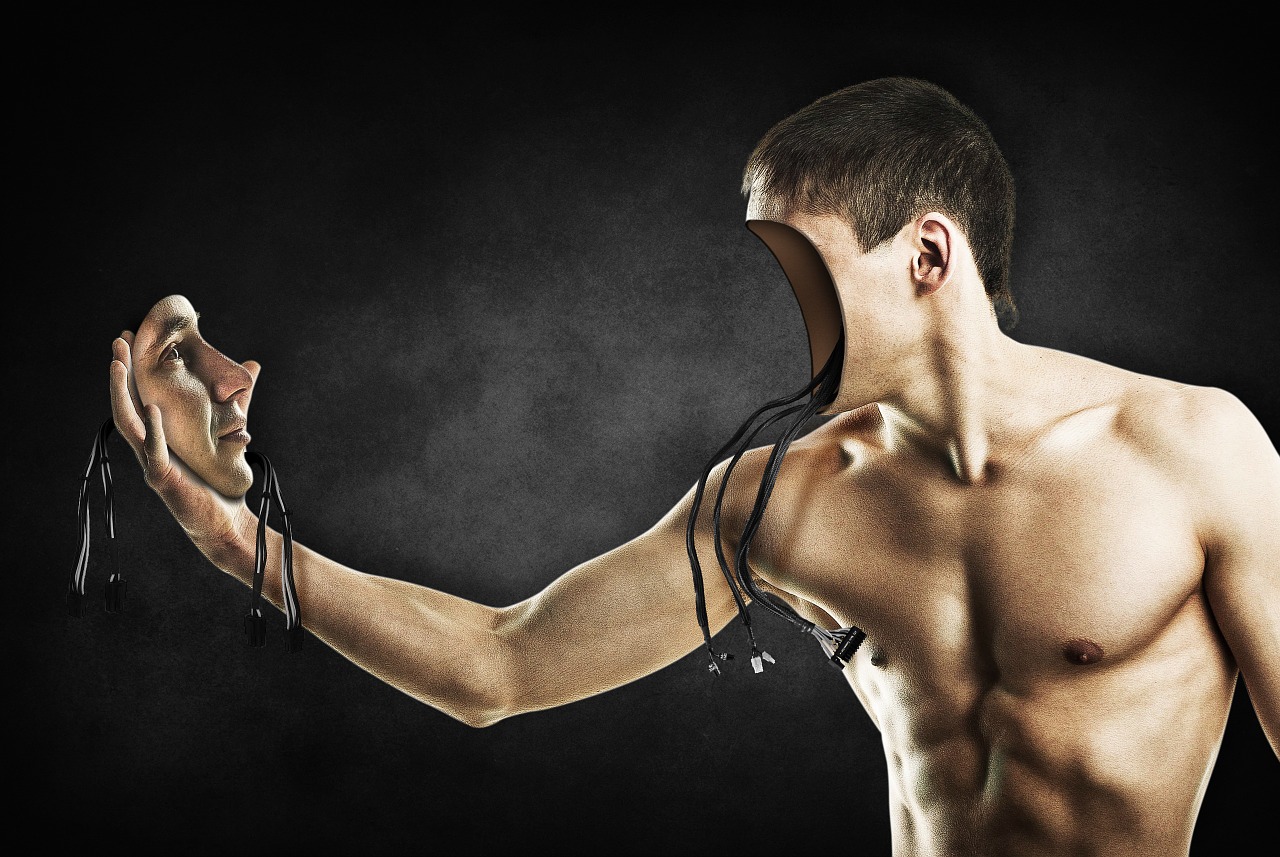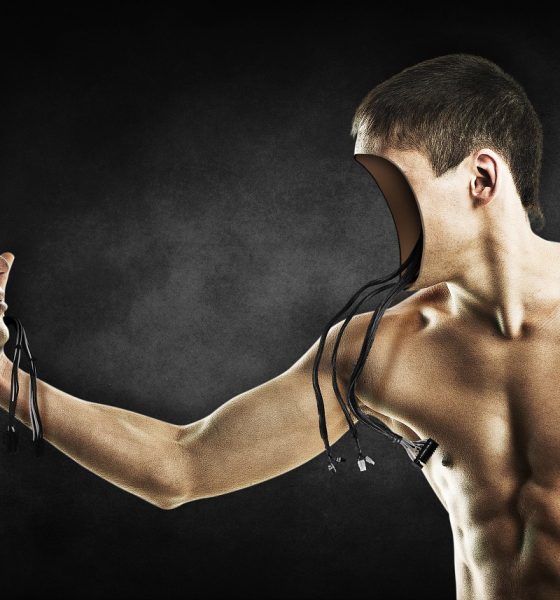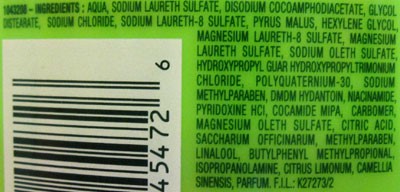

News
Engineers develop bio-machine nose that can “sniff” and classify odors
Engineers from Brown University in Rhode Island have invented a small, low-cost sensor device which is able to classify odors using input from a mimicked “sniffing” action. It’s called TruffleBot, and it’s here to raise the bar on electronic “noses”. It also works with Raspberry Pi, an inexpensive mini-computer popular with electronics hobbyists, students, and others in the “maker” crowd.
Generally, an electronic nose is a device comprising several chemical sensors whose results are fed through a pattern-recognition system to identify odors. In traditional devices, the chemical responses alone are used for classification. The engineers behind this invention, however, decided to incorporate non-chemical data to account for the mechanics of the smell process used in nature for a better result. Their experiment proved successful with an approximate 95-98% rate of accuracy in identification compared to about 80-90% accuracy with the chemical sensors alone.
According to the inventors’ published paper, the guiding knowledge that made TruffleBot so useful in odor detection was this: Different smells have different impacts on the air around them, and measuring the variations enables more accurate identification. Did you know that beer odor decreases air pressure and increases temperature? The changes are slight, but TruffleBot can sense them.
This is where the “sniffing” comes in. The device uses air pumped through four obstructed pathways before sending it through chemical and non-chemical sensors. Odors impact the air surrounding them, and the movement of the air through obstacles (“sniffing”) enables the odors’ impact to be more accurately measured.
A chart detailing how TruffleBot processes odors. | Credit: Brown University
So, where exactly would one need an electronic nose? Everywhere. Devices with the chemical sensing ability are being used in agriculture, military, and commercial applications to identify all sorts environmental data. Essentially, electronic noses are useful in any industrial application that has odor involved.
Nasal Marketing
Did you know that it’s possible to trademark a smell in the United States? It’s not easy to accomplish given the somewhat difficult requirements to meet, but a few such things exist. The fact that Play-Doh, a product whose smell is probably one of its most distinct features, was granted a trademark for the scent only this year is testament to the difficulty of obtaining such a mark. However, the fact that some companies have found enough incentive to make sure only their company can give your nose a particular chemical experience tells a lot about that sense’s importance from a marketing perspective.
On one hand, utilizing smell in marketing might seem a little manipulative. After all, creating an air freshener that reminds someone of a beloved, deceased relative on purpose might not seem like a particularly ethical way to target their money. On the other hand (or bigger picture), however, the motivation for marketers to use scent as a tool involves a sort of “chicken or the egg” question.
To summarize part of an article in the journal Sensors on the role scent plays in society and commerce, the aroma of products has a direct impact on their appeal to customers and thus, the success of the product. In fact, a change in a product’s formula that impacts its smell can, and often has had, devastating sales results. In other words, it’s not enough for a company to create a good product; it has to be a good smelling product.
Hacking the Human Nose
It’s probably no surprise that the commercial industry has categorized consumer preferences when it comes to smells. As the first sense fully developed after birth, our noses link us to things like memories, emotions, and chemical communication (think pheromones). Is it any wonder, then, why businesses might be interested in the functionality of the organ that is doing the receiving?
Turns out, there’s an enormous amount of science behind “hacking” a nose. Identifying smells is more than just categorizing chemical mixtures as “floral” or “masculine”. The multitude of chemical combinations available generates such a vast amount of data that scientists have implemented computer neural networks to analyze and classify it. Also, the actual mechanics of smelling something impacts the way the smell is received and processed in the brain. Computers and scientific instruments come in handy there as well. To really get to the core of human response to an aroma, lots of non-human tools are needed, and this is essentially where the TruffleBot fits in the greater realm of “olfactory” science.
I think this is a Sumerian variant for “fruity”. | Credit: AstroJane’s bathroom collection.
More Than Just Your Money
Perhaps one of the most innovative uses found for electronic noses is in disease research. One of the limitations of human smell is its overall weakness. A dog’s sense of smell is around 40 times better than a human’s, and a bear’s is a whopping 2,100 times superior to ours. That said, when researchers learned that certain diseases give off certain odors, the human nose wasn’t exactly the first choice to utilize in sensing them.
An electronic nose makes good use of the simple fact that organic matter releases chemicals into the air. For example, when a plant has been impacted by a fungus, the changes brought on in the plant’s structure release what’s called “volatile organic compounds” (VOCs). These VOCs can be detected by the sensors in an electronic nose and then provide information on the type of disease present without destroying the plants being tested.
Humans have some amazing things to gain from electronic noses, too. Using sensors to process odors from VOCs, things like digestive diseases, kidney diseases, and diabetes, among many others, are all receiving scientific attention for non-invasive diagnosis by these types of devices. With improvements brought on by inventions like TruffleBot, especially combined with its low-cost and resulting accessibility, a future involving remote diagnoses for any number of illnesses and diseases seems more possible every day.

News
Tesla starts showing how FSD will change lives in Europe
Local officials tested the system on narrow country roads and were impressed by FSD’s smooth, human-like driving, with some calling the service a game-changer for everyday life in areas that are far from urban centers.

Tesla has launched Europe’s first public shuttle service using Full Self-Driving (Supervised) in the rural Eifelkreis Bitburg-Prüm region of Germany, demonstrating how the technology can restore independence and mobility for people who struggle with limited transport options.
Local officials tested the system on narrow country roads and were impressed by FSD’s smooth, human-like driving, with some calling the service a game-changer for everyday life in areas that are far from urban centers.
Officials see real impact on rural residents
Arzfeld Mayor Johannes Kuhl and District Administrator Andreas Kruppert personally tested the Tesla shuttle service. This allowed them to see just how well FSD navigated winding lanes and rural roads confidently. Kruppert said, “Autonomous driving sounds like science fiction to many, but we simply see here that it works totally well in rural regions too.” Kuhl, for his part, also noted that FSD “feels like a very experienced driver.”
The pilot complements the area’s “Citizen Bus” program, which provides on-demand rides for elderly residents who can no longer drive themselves. Tesla Europe shared a video of a demonstration of the service, highlighting how FSD gives people their freedom back, even in places where public transport is not as prevalent.
What the Ministry for Economic Affairs and Transport says
Rhineland-Palatinate’s Minister Daniela Schmitt supported the project, praising the collaboration that made this “first of its kind in Europe” possible. As per the ministry, the rural rollout for the service shows FSD’s potential beyond major cities, and it delivers tangible benefits like grocery runs, doctor visits, and social connections for isolated residents.
“Reliable and flexible mobility is especially vital in rural areas. With the launch of a shuttle service using self-driving vehicles (FSD supervised) by Tesla in the Eifelkreis Bitburg-Prüm, an innovative pilot project is now getting underway that complements local community bus services. It is the first project of its kind in Europe.
“The result is a real gain for rural mobility: greater accessibility, more flexibility and tangible benefits for everyday life. A strong signal for innovation, cooperation and future-oriented mobility beyond urban centers,” the ministry wrote in a LinkedIn post.
News
Tesla China quietly posts Robotaxi-related job listing
Tesla China is currently seeking a Low Voltage Electrical Engineer to work on circuit board design for the company’s autonomous vehicles.

Tesla has posted a new job listing in Shanghai explicitly tied to its Robotaxi program, fueling speculation that the company is preparing to launch its dedicated autonomous ride-hailing service in China.
As noted in the listing, Tesla China is currently seeking a Low Voltage Electrical Engineer to work on circuit board design for the company’s autonomous vehicles.
Robotaxi-specific role
The listing, which was shared on social media platform X by industry watcher @tslaming, suggested that Tesla China is looking to fill the role urgently. The job listing itself specifically mentions that the person hired for the role will be working on the Low Voltage Hardware team, which would design the circuit boards that would serve as the nervous system of the Robotaxi.
Key tasks for the role, as indicated in the job listing, include collaboration with PCB layout, firmware, mechanical, program management, and validation teams, among other responsibilities. The role is based in Shanghai.
China Robotaxi launch
China represents a massive potential market for robotaxis, with its dense urban centers and supportive policies in select cities. Tesla has limited permission to roll out FSD in the country, though despite this, its vehicles have been hailed as among the best in the market when it comes to autonomous features. So far, at least, it appears that China supports Tesla’s FSD and Robotaxi rollout.
This was hinted at in November, when Tesla brought the Cybercab to the 8th China International Import Expo (CIIE) in Shanghai, marking the first time that the autonomous two-seater was brought to the Asia-Pacific region. The vehicle, despite not having a release date in China, received a significant amount of interest among the event’s attendees.
Elon Musk
Elon Musk and Tesla AI Director share insights after empty driver seat Robotaxi rides
The executives’ unoccupied tests hint at the rapid progress of Tesla’s unsupervised Robotaxi efforts.

Tesla CEO Elon Musk and AI Director Ashok Elluswamy celebrated Christmas Eve by sharing personal experiences with Robotaxi vehicles that had no safety monitor or occupant in the driver’s seat. Musk described the system’s “perfect driving” around Austin, while Elluswamy posted video from the back seat, calling it “an amazing experience.”
The executives’ unoccupied tests hint at the rapid progress of Tesla’s unsupervised Robotaxi efforts.
Elon and Ashok’s firsthand Robotaxi insights
Prior to Musk and the Tesla AI Director’s posts, sightings of unmanned Teslas navigating public roads were widely shared on social media. One such vehicle was spotted in Austin, Texas, which Elon Musk acknowleged by stating that “Testing is underway with no occupants in the car.”
Based on his Christmas Eve post, Musk seemed to have tested an unmanned Tesla himself. “A Tesla with no safety monitor in the car and me sitting in the passenger seat took me all around Austin on Sunday with perfect driving,” Musk wrote in his post.
Elluswamy responded with a 2-minute video showing himself in the rear of an unmanned Tesla. The video featured the vehicle’s empty front seats, as well as its smooth handling through real-world traffic. He captioned his video with the words, “It’s an amazing experience!”
Towards Unsupervised operations
During an xAI Hackathon earlier this month, Elon Musk mentioned that Tesla owed be removing Safety Monitors from its Robotaxis in Austin in just three weeks. “Unsupervised is pretty much solved at this point. So there will be Tesla Robotaxis operating in Austin with no one in them. Not even anyone in the passenger seat in about three weeks,” he said. Musk echoed similar estimates at the 2025 Annual Shareholder Meeting and the Q3 2025 earnings call.
Considering the insights that were posted Musk and Elluswamy, it does appear that Tesla is working hard towards operating its Robotaxis with no safety monitors. This is quite impressive considering that the service was launched just earlier this year.








